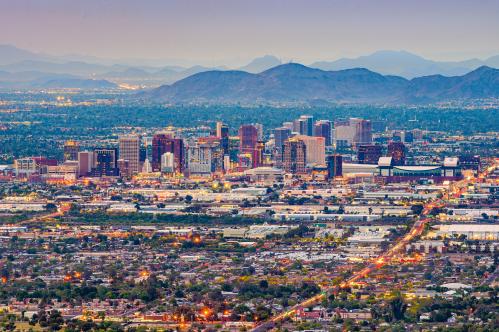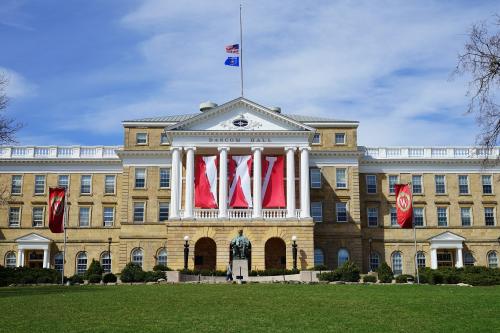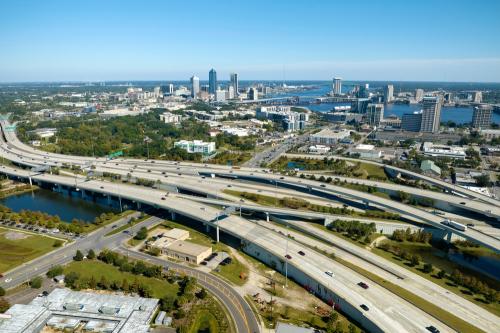Just one month into his term, President Joe Biden faces challenges on multiple fronts. Quelling the COVID-19 pandemic. Delivering on his racial and social justice agenda and addressing persistent economic inequities, which the pandemic has worsened. Creating new good jobs in struggling rural regions and cities. Getting bipartisan support for something from a reluctant Congress.
But despite this long list of priorities, there is one opportunity to thread the political needle and deliver on all of them: a new federal block grant program to create good jobs and increase employment in America’s distressed communities. The program we propose addresses both long-standing community economic distress and new pandemic-induced job loss in a fiscally responsible manner. It follows a two-stage strategy: The first stage begins by investing in communities that were already facing a weak jobs picture. The second would focus aid on newly distressed areas, as new data comes in concerning where the economic damages from COVID-19 have been most severe.
As first proposed in a paper for the Brookings Institution, this federal block grant would target communities with persistently low levels of good jobs and low employment rates—a focus that will mean relief and job-building support for both urban communities as well as small town and rural America. The program also delivers for residents of neighborhoods with low employment rates where residents can’t access good jobs in otherwise prosperous local areas.
The annual block grant program would total around $19 billion. The communities and neighborhoods it serves would be those home to the most economically distressed 30% of the U.S. population, illustrated in the map below. Community economic distress would be measured by the extent to which the community is behind the national average in its employment-to-population ratio (employment rate) for so-called “prime-age workers” between the ages of 25 and 54. Higher per capita funding would be provided to the most distressed communities and neighborhoods. All told, this funding would afford the most distressed communities with per capita support equivalent to what was provided by the country’s most ambitious past regional development program, the Tennessee Valley Authority.

The program’s purpose would be to increase the number of community residents employed in good-paying jobs, and do so cost-effectively. For example, funds could be used to provide manufacturers with technical assistance in adopting new technologies and entering new markets, or provide neighborhood residents with training so they are qualified for the good jobs that do exist in their community.
A coalition of “New Democrats”—a group of 95 centrist, self-described “pro-economic growth, pro-innovation, and fiscally responsible” members of Congress—is urging President Biden to make such aid part of his “Build Back Better” program. The group recently introduced a package of legislation for COVID-19 recovery, with a version of the block grant proposal as a key component. And it may be one of the rare items that could also win support from the Republican side of the aisle. Here’s why:
First, the federal block grant program targets communities most in need of good jobs. Designed to serve communities with the lowest employment rates, this means it works for struggling urban centers such Detroit and Flint, Mich. as well as Appalachia, the rural South, and the rural West—whole swaths of the country where lots of people lack good job opportunities. In more prosperous communities, the program helps residents of distressed neighborhoods gain greater access to jobs throughout the metro area. This would be one program that would deliver good jobs for both red and blue America.
The program works by targeting community needs. For example, grants could create jobs by offering small businesses affordable locations in business incubators. Alternatively, grants could be used to create Neighborhood Employment Hubs that provide residents with services needed to find and keep good jobs, including information on job opportunities and access to high-quality child care services.
The program also doesn’t give untargeted aid to state and local governments—which some Republicans have argued is not needed. Rather, the program is specifically targeted at economically distressed areas, and demands that federal funds be spent cost-effectively. Costs per job created are lowered by avoiding expensive and less effective business tax incentives, with a focus instead on enhancing services that we know have a bigger job creation bang-for-the-buck, including infrastructure, customized job training, manufacturing extension services, and land redevelopment (see Figure 1).

With $19 billion annually in highly targeted funds and the most cost-effective programs to create good jobs, we can make a real difference in America’s distressed communities. After 10 years of this program, we estimate that the block grant would close half the gap between these communities’ below-average prime-age employment rates and the national average. Greater job availability in these distressed communities will not only help many community residents get jobs, but also will improve health, reduce substance abuse and crime, and support stronger families and child development.
The proposed block grant program also acknowledges the differential impacts that the Great Recession of 2007 to 2009 and the current pandemic-induced recession had on communities. As we’ve written before, the pandemic has uniquely impacted communities reliant on manufacturing, food processing and production, and large personal service and hospitality industries. These recessionary problems can cause lasting community damages—unless we intervene.
A targeted federal block grant program to revitalize distressed communities can be a powerful way for the Biden administration and Congress to come together and create new economic pathways for the Americans that need it most. The country is currently facing a long list of challenges, but aiding distressed communities is one opportunity to confront many of them at the same time.







Commentary
The program that could revitalize both red and blue America
February 25. 2021